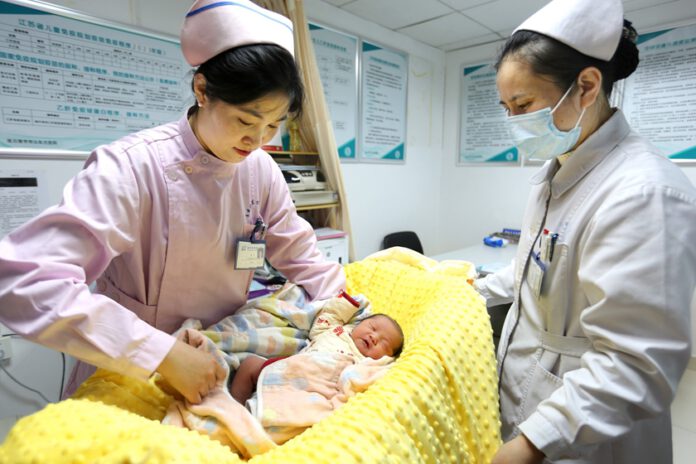
The results of China’s seventh national census indicate that the total fertility rate (TFR) for women of childbearing age in my country was just 1.3 in 2020, reflecting a concerningly low level.
The TFR represents the average number of children born to each couple, with an international benchmark of 2.1 for generational replacement. This figure accounts for mortality risk, indicating that couples need to have about 2.1 children to maintain population levels.
A TFR of around 1.5 is viewed as a critical threshold; falling below this level raises the risk of entering a low fertility trap. While updated data has yet to be released, experts predict that the TFR may have declined further. This sustained low fertility rate contributes to a declining population and an aging demographic, undermining economic and social development potential.
Du Peng, Dean of School of Population and Health, and Director, Institute of Gerontology of Renmin University of China, emphasizes that recent birth statistics suggest the TFR is now even lower than in 2020, indicating an extreme decline. If this trend persists, it will have long-lasting effects on society, including a reduced birth cohort that exacerbates negative population growth.
The shrinking population will influence future educational needs, labor supply, and the distribution of social resources. Moreover, while the willingness to have children remains higher than the current TFR, many families face challenges related to childbirth, child-rearing, and education, indicating that the TFR does not accurately reflect societal intentions regarding childbearing.
To assist families wishing to have one or two children, it is essential to cultivate a fertility-friendly environment that genuinely reduces the costs of childbirth, child-rearing, and education. This support is vital for stabilizing and potentially increasing the TFR, which is crucial for the social and economic development of the country.
Since implementing the universal two-child policy in 2016, followed by the three-child policy in 2021, the Chinese government has been actively promoting fertility support measures to enhance reproductive health and prenatal care services. A preliminary system of fertility support policies has been established. According to officials from China’s National Health Commission, provinces typically offer over 60 days of extended maternity leave, approximately 15 days of spouse maternity leave, and 5 to 20 days of parental leave, with maternity leave extended to over 158 days in all provinces.
Additionally, the country’s capacity for preventing birth defects has improved significantly. National rates for pre-pregnancy examinations and prenatal screenings now exceed 90%, with screening for neonatal genetic disorders and hearing impairments reaching over 98%. The optimization of fertility policies extends beyond service enhancements to economic support as well.
In January 2022, the government began including care for children under three in personal income tax deductions. In 2023, the deduction standard increased from 1,000 yuan to 2,000 yuan per child per month, benefiting many families with young children.
In August 2022, the National Health Commission, alongside 17 other departments, issued guiding opinions to focus on optimizing the maternity leave system, enhancing hospitalization and delivery conditions, and expanding labor analgesia options.
On October 28, the General Office of the State Council released the Several Measures for Accelerating Improvement of Reproduction Policy Support Systems and Promoting the Establishment of a Reproduction-friendly Society.
These measures propose a comprehensive approach to fertility support through four key areas:
Strengthening Fertility Services: Enhancing maternity insurance coverage to include flexible workers, migrant workers, and new employment forms, ensuring that maternity and paternity leave are fully implemented, and establishing a maternity subsidy system. Local governments are encouraged to improve reproductive health services and include appropriate labor analgesia and assisted reproductive technologies in medical insurance.
Enhancing Childcare Services: Improving children’s medical services and incorporating eligible children’s medications into medical insurance. Increasing the availability of inclusive childcare services and supporting diverse childcare models, while also enhancing policies to provide operational subsidies for inclusive child care institutions.
Supporting Education, Housing, and Employment: Expanding access to quality educational resources, encouraging after-school services and social projects, and implementing policies to support multi-child families in housing and employment, including flexible work arrangements.
Creating a Fertility-Friendly Social Atmosphere: Promoting a new culture of marriage and childbearing that emphasizes positive views on family life, enhancing public awareness of high-quality population development, and integrating education on national population policies into school curricula.
The Measures stress the importance of improving political commitment and responsibility among all stakeholders, including governments, employers, and individuals, to ensure the effective implementation of fertility support policies.
Source: Xinhua, CCTV13, CGTN, guandian



